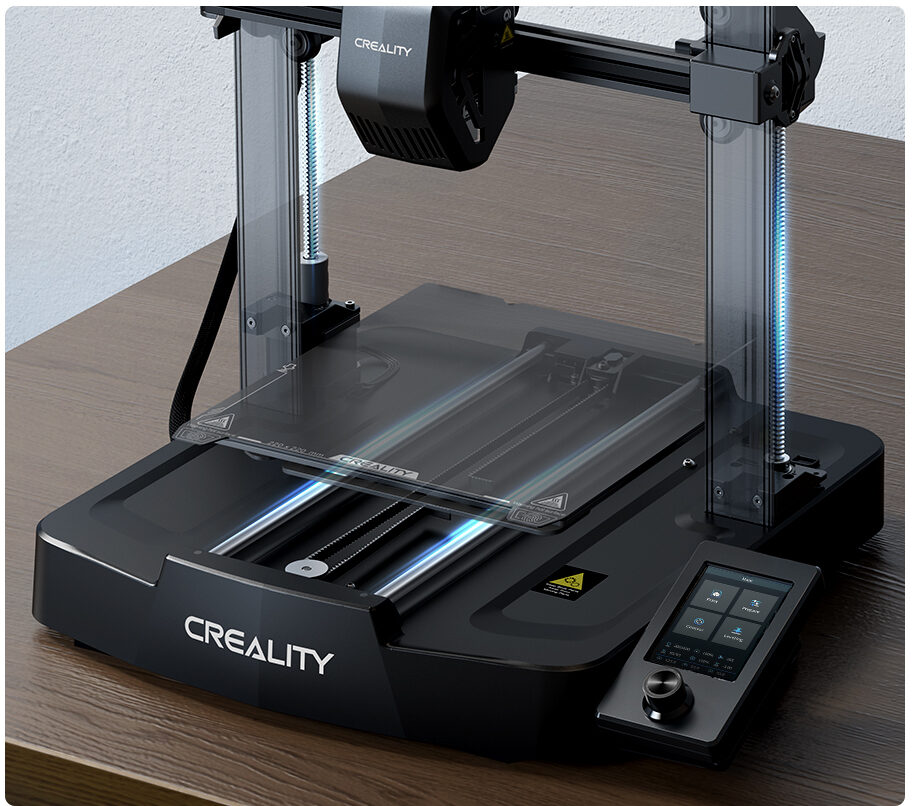Creality To Go Public
⚓ p3d 📅 2025-08-19 👤 surdeus 👁️ 16Creality is one of the largest 3D printing companies in the world. It probably ships more 3D Printers than anyone else. In a competitive market, the company has gone from making value-engineered, very low-cost printers to countering Bambu Lab with sophisticated K1 and K2 desktop units. Creality now sells scanners, has software, makes laser cutters, and ships a lot of filament. The company has now disclosed that it wants to go public and has filed a prospectus in Hong Kong.
Creality has over $320 million in revenue (2.3 billion yuan, which means I overestimated it considerably in this article). The company says that it had a 500 million yuan ($69.6 million) financing round in 2021. That’s the only funding round to date, meaning the remaining equity is held by the founders. The lucky investors that got on board in 2021 were AVIC Pingshan, Tencent Ventures, Qianhai FOF, and Shenzhen Capital Group. These are all notable Chinese investors, more specifically, they’re the crème de la crème of Shenzen-linked VCs. AVIC Pingshan is part of AVIC, China’s state-owned enterprise that makes the Chengdu J-20 fighter. As a giant conglomerate, AVIC is ever-present in the Chinese industry, and backs major strategic zones — including the Pingshan innovation district, a hub focused on integrated circuit production. AVIC is also a sanctioned company that supplies aviation equipment to Russia, and US individuals and institutions are prohibited from owning shares in it, given its links to the People’s Liberation Army (PLA), China’s military. You could still own shares in Creality, though.
Tencent is, of course, one of the best-known Chinese tech companies, and getting them on board is very prestigious for a 3D printing firm. Qianhai FOF has made over 361 investments in startups and has 47 exits, including robotic arm maker Dobot. The fund of funds is linked to the Shenzhen city government and specifically the Qianhai economic district. Shenzhen Capital has invested in over 1500 firms, of which 272 have gone public, including Jinko Solar (now a $12 billion revenue firm) and Semiconductor Manufacturing International (now an $8 billion revenue firm). They are one of China’s leading VC investors and a part of Shenzen’s provincial government. This is not only a prestigious group of investors but also a very connected elite. On the one hand, it’s a major seal of approval, but it is also the cost of doing business in China and much more likely to make your IPO a success. Qianhai holds 5.81%, while Shenzhen Capital holds 4.32%, and Tencent has 2.16%.

The company has disclosed in its filings that, for the period “2022 to 2024, Creality 3D’s revenues were 1.346 billion yuan [$187.3 million], 1.883 billion yuan [$262.1 million], and 2.288 billion yuan [$318.4 million], respectively, with a compound annual growth rate of 30.4%. The annual profits were 104 million yuan [$14.5 million], 129 million yuan [$18 million], and 88.66 million yuan [$12.3 million], respectively.”
Creality also says that, “In 2025, the company’s revenue was 708 million yuan [$98.5 million], a year-on-year increase of 28.67%. The profit during the period was 81.564 million yuan [$11.4 million], a year-on-year increase of 18.1%.” It’s perhaps the most surprising that the firm continues to do well in the face of Bambu Lab’s rapid rise and growing influence in the consumer 3D printing market.
Showing an increase in revenue and profit is a very positive thing, and gross profit margins from 2022 to Q1 2025 were also strong: 28.8%, 31.8%, 30.9%, and 35.2%. Now that I think about it, it will really surprise some because the expectation of that kind of margin wasn’t really there for their low-cost business. The filament sales probably help, as well as the company’s significant volumes. The company also says that it has 2,163 distributors globally. Remarkably, the company reveals that only 61.3% of its revenue comes from 3D printers now, with other hardware and filament making up the remainder. The filament business and the investment in high-speed and more functional filaments are surely a huge boon to Creality. Expanding into laser cutters and scanners seems to be doing well for them, also.
Founders held 81.98% of shares, so the payday here could be immense for the founding four: Chen Chun, Ao Danjun, Liu Huilin, and Tang Jingke. Creality is a remarkable company. Its products initially were not any different from dozens of other clones. Then it developed a slight edge and for years duked it out with Anet, Artillery, and others in the low-cost 3D printer space. The company’s printers have become better, more sophisticated, and more reliable, while still being leaders in value. Galvanized by Bambu Lab’s market entry, the firm responded with the higher-speed K1 and K2 systems and increasing software integration.
If the firm goes public well here, it could solidify its position in the market and keep Bambu Lab at bay. A well-publicized, successful, and well-subscribed IPO would be incredibly impressive for the firm and our industry. We need this to work. If this IPO fails, we’re screwed. No one will finance our industry, but if it does well, then further IPO events, from Formlabs and others, could establish us as a growing, thriving industry that could see more investment come to it. Well-capitalized firms would also invest and expand their capabilities, perhaps expanding their growth and future prospects. Then the narrative would shift from “some 3D printing companies have done badly,” to “just like Peugeot and Ford were some of only a handful of companies out of a hundred to emerge out of the automotive revolution, so the 3D Printing industry has few victors.” That would go far to establish our credibility with investors. If the Creality IPO goes badly, we must go on, but we will have to do it under our own power.
Images courtesy of Creality
🏷️ p3d_feed
